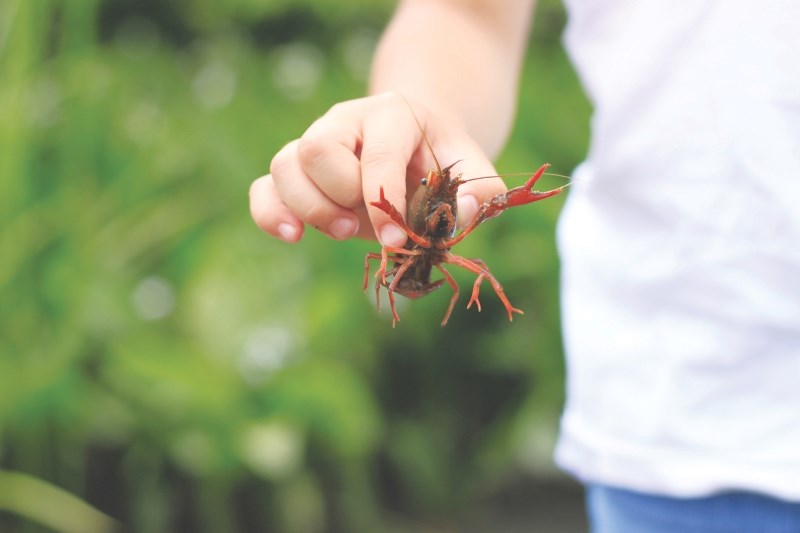Crustaceans spotted in Airdrie’s Nose Creek shouldn’t be there and could harm the natural habitat of other species, according to Cheryl Lowe, natural areas technician with the City of Airdrie Parks department.
“They are a non-native species and an invasive species in Nose Creek,” she said. “It is likely that they were introduced by possibly a bait fishing dump, so someone dumping the crayfish most likely with a pail, into the Nose Creek area, or it could also be someone dumping out their aquarium that had crayfish in it.”
Crayfish have been found in Nose Creek since at least 2013. Lowe said they were likely introduced from the Beaver River watershed in Northern Alberta.
According to Lowe, while the crayfish are “technically edible,” she doesn’t recommend residents eat them.
Lowe said the Parks department is not overly concerned by the presence of the crayfish in Nose Creek.
“The crayfish have adapted well to the Nose Creek waters. Although they can be a concern, there’s not much we can do about it,” she said.
“We can see them as a concern as they can be potential competition for other species of fish that would eat the same foods that the crayfish do, such as small invertebrate organisms found in the streambed. The crayfish have such a population in the creek that there’s nothing we’re going to actively pursue.”
Lowe said while she didn’t know the exact number of crayfish that have taken up residence in the creek, she thought it was a substantial number.
“What we need residents to do is to not transport crayfish,” she said. “The transporting of any species from one water body to another water body or just out of the water body itself is illegal.”
Lowe said the crayfish have found a happy place to live in part because of the temperature of Nose Creek. They would not have found such a hospitable new home in a larger body of water like the Bow River.
“It’s unlikely they would establish a population (in the Bow River) just because the temperature of the Bow River is much colder than Nose Creek and their reproduction needs a warmer water,” she said.
Lowe said the example of the crayfish in Nose Creek is a good reminder to residents to be good environmental stewards.
“Don’t transport one species from one habitat to another as there’s always a risk of spreading a non-native species into an environment and causing huge ramifications to that habitat, as well as economic ramifications,” she said.



